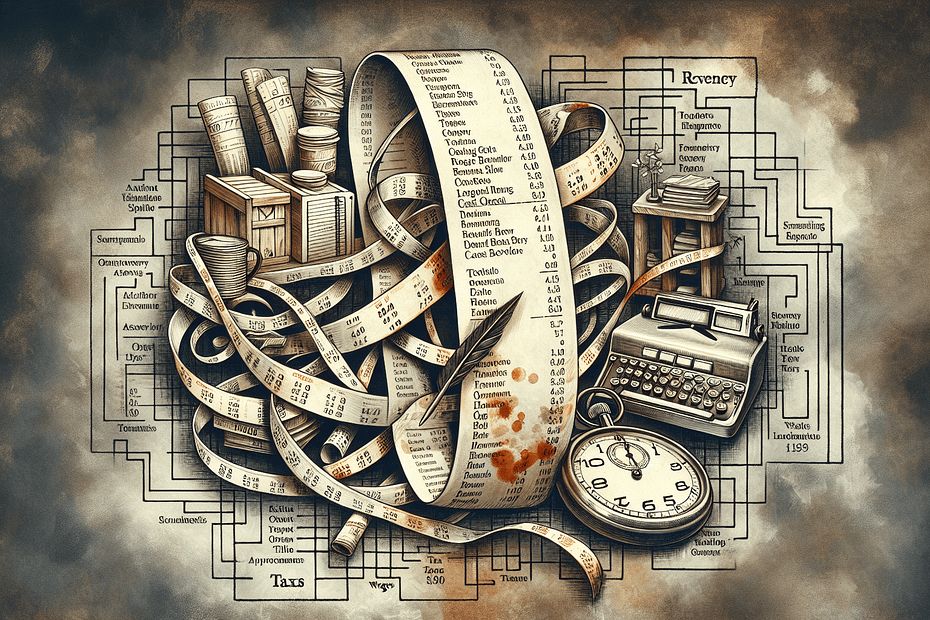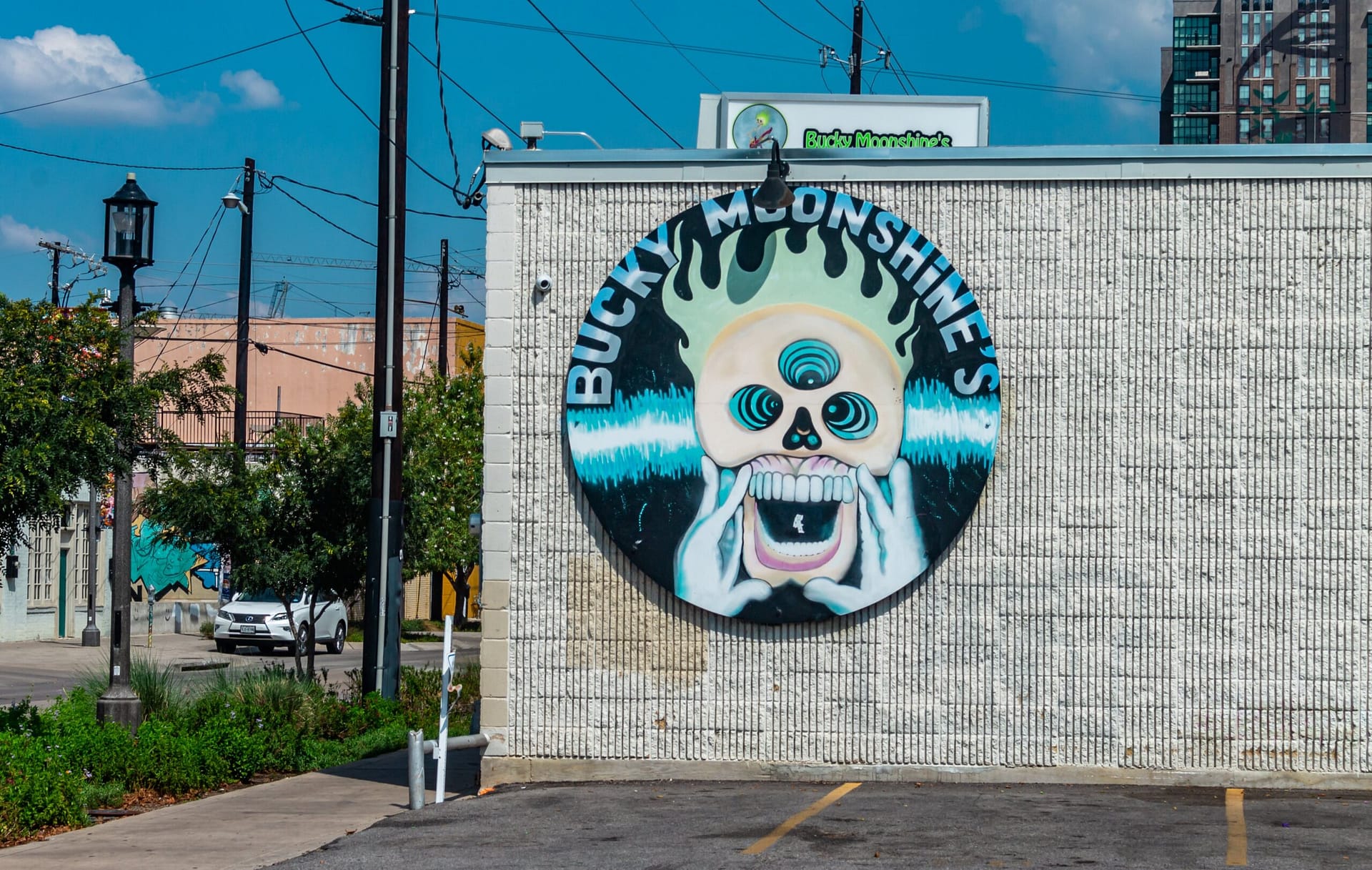Running a restaurant comes with its own set of challenges, and managing the accounting aspects can be quite daunting. In this article, we will explore the most significant accounting challenges that restaurant owners commonly face. From tracking expenses and managing cash flow to handling payroll and maintaining accurate inventory records, we will delve into these key areas to provide you with insights on how to tackle these challenges effectively. Whether you are a seasoned restaurant owner or just starting out in the industry, this article will help you navigate the complex world of restaurant accounting with ease.
Inventory Management
Tracking and Valuing Inventory
Managing inventory is a crucial aspect of running a restaurant. One of the biggest challenges in inventory management is accurately tracking and valuing inventory. It is important to keep a close eye on how much stock you have on hand to ensure that you don’t run out of essential items or waste money on excess inventory. Implementing a reliable tracking system can help you keep track of incoming and outgoing inventory, as well as monitor the value of your stock. This way, you can make informed decisions about purchasing and ensure that you have the right amount of inventory to meet customer demand while minimizing waste.
Waste and Spoilage
Restaurants often deal with the challenge of waste and spoilage when it comes to inventory management. Food items have expiry dates, and if not used promptly, they can become unusable and result in financial losses. Minimizing waste and spoilage is crucial to maintaining profitability. One way to address this challenge is by implementing a first-in, first-out (FIFO) inventory management system. By rotating inventory based on expiration dates and using older stock first, you can reduce the risk of spoilage and waste. Additionally, training staff on proper storage and handling techniques can help prevent unnecessary losses and maximize the shelf life of your inventory.
Inventory Counting and Reconciliation
Another accounting challenge for restaurant owners is conducting accurate inventory counts and reconciliations. Regular physical counts of your inventory are necessary to ensure that your records align with the actual stock on hand. This process can be time-consuming and prone to errors if not managed properly. Implementing effective inventory counting procedures, such as assigning specific staff members to conduct counts and using standardized checklists, can help streamline the process. Additionally, regularly reconciling your inventory records with actual counts can help identify discrepancies and address any issues promptly. This practice ensures the accuracy of your financial records and provides valuable insights into your inventory management effectiveness.
Cost Control
Labor Costs
Labor costs are a significant expense for restaurant owners, and effectively managing them is crucial for maintaining profitability. Scheduling staff efficiently, tracking employee hours accurately, and controlling overtime are all key factors in controlling labor costs. Utilizing workforce management software can help you streamline scheduling and monitor labor costs in real-time. By keeping a close eye on your labor costs, you can ensure that you are optimizing employee productivity without overspending on wages.
Food and Beverage Costs
Controlling food and beverage costs is another major challenge for restaurant owners. Pricing ingredients accurately, monitoring portion sizes, and minimizing waste are all important aspects of cost control in this area. Implementing inventory tracking systems and regularly reviewing vendor prices can help you identify any variations in costs and make necessary adjustments. Moreover, analyzing your menu’s profitability and considering ingredient substitutions can help you maximize profit margins without compromising quality or customer satisfaction.
Overhead Costs
Aside from labor and food costs, managing overhead expenses is also crucial for restaurant owners. Overhead costs include rent, utilities, insurance, and other fixed expenses. To effectively control overhead costs, it’s important to regularly review and negotiate contracts with suppliers and service providers. Energy-saving initiatives, such as using energy-efficient appliances and optimizing lighting and heating systems, can also lead to significant cost savings in the long run. Utilizing accounting software that tracks and categorizes expenses can provide you with a clear overview of your overhead costs, helping you identify areas for potential cost reduction.
Cash Flow Management
Seasonality and Fluctuating Revenue
Many restaurants experience seasonality in their business, with fluctuating revenue depending on the time of year. This can pose challenges for cash flow management. During peak seasons, cash flow may be high, but it can become tight during slower periods. To address this, it is important to anticipate and plan for these fluctuations in revenue. Creating a cash flow forecast that takes into account seasonal variations can help you identify potential cash flow gaps and plan accordingly. Establishing a line of credit or maintaining a cash reserve can also provide a buffer during slower months.
Late Payments and Outstanding Invoices
Dealing with late payments and outstanding invoices is a common challenge for restaurant owners, which can impact cash flow and financial stability. Implementing effective invoicing and payment collection processes can help mitigate this challenge. Clearly communicate your payment terms to customers and provide multiple payment options, such as online payment portals or mobile payment options, to make it easier for customers to settle their bills. Monitoring accounts receivable and following up promptly on overdue payments is essential for maintaining a healthy cash flow.
Managing Expenses
Closely monitoring and managing expenses is crucial for effective cash flow management. Regularly reviewing your expenses and identifying areas where you can cut costs or negotiate better deals with suppliers can help improve your cash flow. Set budgets for different expense categories and track your actual spending against these budgets. Analyzing financial statements and identifying cost-saving opportunities can make a significant impact on your bottom line. Additionally, utilizing expense management software can simplify the expense tracking process, allowing you to have a real-time overview of your spending and make informed decisions.
Tax Compliance
Understanding Tax Regulations
Understanding and complying with tax regulations is an essential aspect of running a restaurant. With various taxes applicable to the industry, such as sales tax and payroll taxes, it’s important to stay informed about the rules and regulations specific to your location. Consider consulting with a tax professional or hiring an accountant who specializes in the restaurant industry to ensure you stay compliant and maximize available tax deductions.
Sales Tax Collection and Reporting
Collecting and reporting sales tax accurately can be complex, as it involves managing different tax rates, exemptions, and regulations. It’s essential to implement a reliable point-of-sale (POS) system that can automatically calculate and track sales tax. Regularly reconciling your sales records with your tax filings can help identify any discrepancies or errors and ensure compliance with tax authorities.
Payroll Taxes
Managing payroll taxes can also be a challenge due to the unique nature of the restaurant industry with its various positions and fluctuating staffing needs. It’s important to stay up-to-date with payroll tax rates and regulations, as well as accurately calculate and withhold taxes from employee wages. Utilizing payroll software that automates tax calculations and filing can help simplify the process and reduce the risk of errors or penalties. Regularly reviewing your payroll records and ensuring they align with your tax filings is crucial for remaining tax compliant.
Payroll Processing
Calculating Payroll Expenses
Accurately calculating payroll expenses is important for financial reporting and budgeting purposes. In the restaurant industry, where staff turnover may be higher compared to other sectors, it’s essential to consider factors such as hourly wages, overtime, tips, and benefits when calculating payroll expenses. Utilizing payroll software can automate these calculations and simplify the process, ensuring accuracy and reducing the risk of errors.
Employee Time Tracking
Effective time tracking is vital for managing payroll expenses and ensuring compliance with labor laws. Implementing a reliable time tracking system, such as a biometric clock or a digital timekeeping app, can help accurately capture employee hours worked. This ensures employees are compensated correctly and provides detailed records in case of audits or labor law disputes.
Compliance with Labor Laws
Complying with labor laws is crucial for restaurant owners to avoid potential legal issues and penalties. Labor laws often cover areas such as minimum wage, overtime, and break regulations. Familiarize yourself with the labor laws specific to your location and industry. Conduct regular audits to ensure compliance with labor laws, review employee classifications, and stay informed about any updates or changes in regulations. Seeking guidance from a labor law specialist or HR consultant can provide valuable insights and help you navigate complex labor regulations.
Accounting Software and Technology
Choosing the Right Accounting Software
Selecting the right accounting software can greatly facilitate accounting processes and provide valuable financial insights. Consider your specific needs, such as inventory management, payroll processing, and financial reporting, when choosing an accounting software solution. Look for software that integrates with other systems you use, such as POS or inventory management systems, for seamless data transfer and accurate financial records.
Learning and Implementing New Systems
Once you have chosen the right accounting software, it’s important to invest time in learning and implementing the new system effectively. This may involve training staff on how to use the software, importing existing financial data, and setting up workflows for efficient data entry and reporting. Investing in training and seeking support from the software provider can help ensure a smooth transition and maximize the benefits of the new system.
Data Security and Privacy
Maintaining data security and privacy is vital when using accounting software and technology. Restaurant owners should prioritize data protection measures, such as strong passwords, encryption, and regular data backups. Additionally, ensure that your accounting software provider has robust security measures in place, such as secure servers and encrypted data transmission. Regularly reviewing and updating your security protocols can help safeguard sensitive financial information.
Financial Reporting
Generating Accurate and Timely Reports
Financial reporting provides valuable insights into the financial health of your restaurant and helps you make informed business decisions. However, generating accurate and timely reports can be challenging without the right tools and processes in place. Utilizing accounting software that offers customizable reports can help automate this process and provide you with up-to-date financial information. Regularly review your reports, such as profit and loss statements and balance sheets, to analyze trends, identify potential issues, and make informed financial decisions.
Interpreting Financial Statements
Interpreting financial statements can be daunting for restaurant owners without a strong financial background. Familiarizing yourself with key financial terms and concepts, such as revenue, expenses, and profit margins, can help you understand and analyze your financial statements effectively. Consider seeking support from an accountant or financial consultant to help you interpret your financial statements and gain a deeper understanding of your restaurant’s financial performance.
Analyzing Key Performance Indicators
Key performance indicators (KPIs) provide insights into specific aspects of your restaurant’s performance and can help you gauge success and identify areas for improvement. Some common KPIs in the restaurant industry include food cost percentage, labor cost percentage, and average check size. Regularly tracking and analyzing these KPIs can help you measure performance against industry benchmarks and make data-driven decisions to boost your profitability. Utilizing accounting software that offers customizable dashboards and KPI tracking can simplify this process and provide you with real-time insights.
Fraud Prevention
Cash Handling and Reconciliation
Proper cash handling and reconciliation processes are essential for preventing fraud and ensuring accurate financial records. Implementing segregation of duties, where different staff members have assigned responsibilities for cash handling, can help reduce the risk of internal fraud. Regularly reconciling cash registers, petty cash, and bank statements can help identify any discrepancies or irregularities. Utilizing cash management systems, such as cash counting machines or secure cash drawers, can further enhance the security of your cash handling processes.
Internal Controls
Establishing strong internal controls is vital for preventing and detecting fraudulent activities. This includes implementing procedures for approving and reviewing financial transactions, ensuring proper documentation for expenditures, and conducting regular audits. By separating financial duties, conducting surprise audits, and promoting an ethical culture, you can minimize the risk of fraud and the financial losses associated with it. Seeking guidance from a fraud prevention specialist or an accountant with experience in restaurant operations can provide valuable insights and help you implement effective internal controls.
Monitoring and Detecting Fraudulent Activities
Vigilant monitoring and proactive detection of fraudulent activities are essential for protecting your restaurant’s financial wellbeing. Utilize accounting software that offers features such as transaction monitoring and alerts for suspicious activities. Regularly review financial records, such as sales reports, expense logs, and bank statements, for any irregularities or patterns that may indicate potential fraud. Conducting fraud risk assessments and educating staff about common fraud schemes can also help raise awareness and minimize the risk of fraudulent activities within your establishment.
Budgeting and Forecasting
Creating Realistic Budgets
Creating realistic budgets is essential for financial planning and decision-making. To create accurate budgets, consider historical data, industry benchmarks, and any upcoming changes or investments in your restaurant. Analyze your financial statements and identify areas where you can reduce costs or increase revenue. Involve key stakeholders, such as managers or department heads, in the budgeting process to ensure buy-in and accuracy. Regularly review and revise your budgets based on actual performance to maintain their relevance and effectiveness.
Forecasting Sales and Expenses
Forecasting sales and expenses is crucial for anticipating future cash flow and financial needs. Consider historical sales data, market trends, and upcoming events or promotions when forecasting sales. For expenses, analyze fixed costs and variable expenses, such as labor and inventory, to project future spending. Utilizing accounting software that offers forecasting tools can streamline this process and provide you with accurate projections. Regularly compare your forecasts to actual results to identify any deviations and make necessary adjustments.
Adapting to Changing Economic Conditions
The economy is constantly evolving, and restaurants must be prepared to adapt to changing economic conditions. This includes anticipating potential economic downturns or recessions, as well as changes in consumer behavior or preferences. Monitor economic indicators and industry trends to stay informed about potential challenges and opportunities. Develop contingency plans and alternative revenue streams to mitigate the impact of economic fluctuations. Maintaining open communication with suppliers, customers, and industry peers can provide valuable insights and help you react swiftly to changing economic conditions.
Bookkeeping and Record Keeping
Organizing and Maintaining Financial Records
Effective bookkeeping and record keeping are essential for accurate financial reporting and tax compliance. Establish a system for organizing and maintaining financial records, such as invoices, receipts, bank statements, and payroll records. Utilize digital storage solutions, such as cloud-based platforms, to securely store and access your financial records. Regularly review and reconcile your records to ensure accuracy and completeness.
Tracking and Categorizing Expenses
Tracking and categorizing expenses is crucial for managing cash flow, monitoring profitability, and preparing financial statements. Implement a system for accurately recording and categorizing expenses to ensure you have a clear overview of your spending and can identify areas for cost reduction. Utilize accounting software that allows you to categorize expenses effectively and generate expense reports for analysis. Regularly review your expense records and address any discrepancies or anomalies promptly.
Safeguarding Documentation
Safeguarding financial documentation is vital for protecting your restaurant’s interests and complying with legal requirements. Regularly back up electronic records and store physical copies of important documents, such as tax returns, contracts, and lease agreements, in a secure location. Utilize password protection and restrict access to sensitive financial information. Consider implementing document retention policies to ensure you retain necessary records while also disposing of outdated or irrelevant documents in a secure manner.
In conclusion, managing the accounting aspects of a restaurant can be a complex task, but with proper systems, processes, and the right technology, these challenges can be overcome. By effectively tracking and valuing inventory, controlling costs, managing cash flow, ensuring tax compliance, processing payroll accurately, utilizing accounting software and technology, generating financial reports, preventing fraud, budgeting and forecasting, and maintaining organized records, restaurant owners can navigate the intricacies of accounting with confidence. Prioritizing these areas of focus will not only help improve financial management but also contribute to the overall success and profitability of the restaurant.




